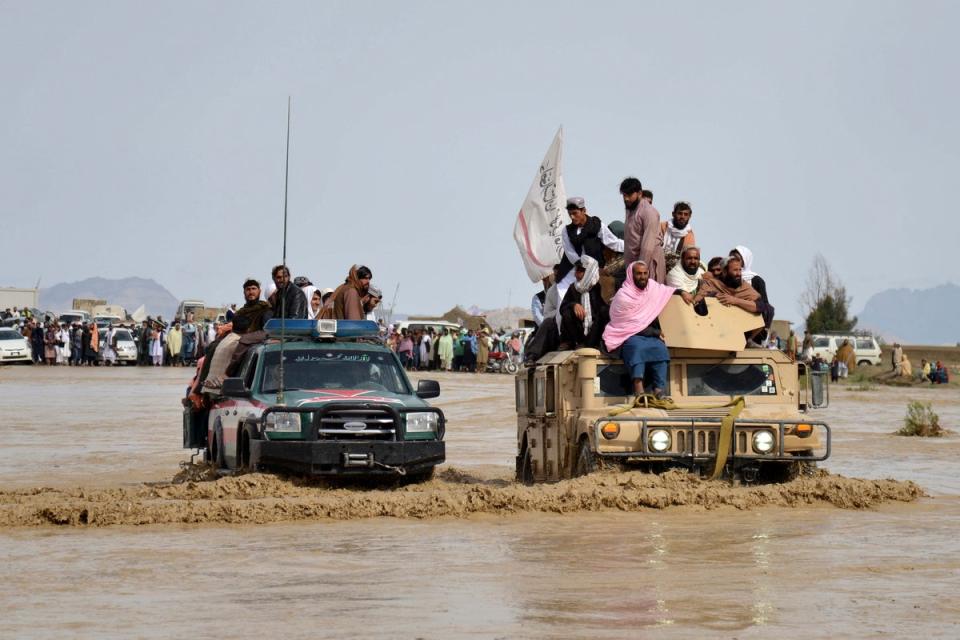Flash floods, lightning strikes kill dozens in Afghanistan and Pakistan
Heavy rains have unleashed devastating flash floods in Afghanistan and Pakistan, killing dozens of people in recent days, damaging crops and destroying infrastructure.
Seasonal rains, accompanied by thunderstorms, have been lashing the two countries unrelentingly over the past week, destroying houses and infrastructure.
A Taliban spokesperson confirmed on Sunday that flash floods had killed at least 33 people in Afghanistan and injured 27.
The floods also killed 200 livestock, destroyed over 600 houses, and damaged 800 hectares of farmland and 85 kilometres of roads, Abdullah Janan Saiq, the spokesperson for the Ministry for Natural Disaster Management, said.
The regions of western Farah, Herat, southern Zabul, and Kandahar suffered the most damage, he added.
Pakistan has reported at least 39 deaths from floods and lightning strikes.
Photos and videos posted on social media show people wading through waist-deep water to save their belongings from their flooded homes.
Balochistan, Khyber Pakhtunkhwa and Punjab provinces have been affected the most. Balochistan’s coastal towns, including the key port town of Gwadar, have suffered severe damage, local media reported, with the impact on power and other key infrastructure hindering daily lives.

The weather departments in both Afghanistan and Pakistan forecast more rain in the coming days.
South Asia receives 70-80 per cent of its annual rainfall during the monsoon season which starts in late June. However, rainfall in early summer is also common.
The region has seen erratic rainfall patterns in recent years with longer dry periods and extreme rainfall in short periods, a phenomenon scientists and experts have attributed in part to rising global temperatures.
Pakistan and Afghanistan are among the most vulnerable countries in the world to climate crisis, with extreme flood-related damage reported in recent years, despite their negligible contribution to the accumulated carbon pollution that is driving up the temperatures.
In 2022, Pakistan suffered its worst floods on record which left one-third of the country under water. It killed over 1,700 people and left millions internally displaced. Since then, repeated disasters have impacted victims every year.

